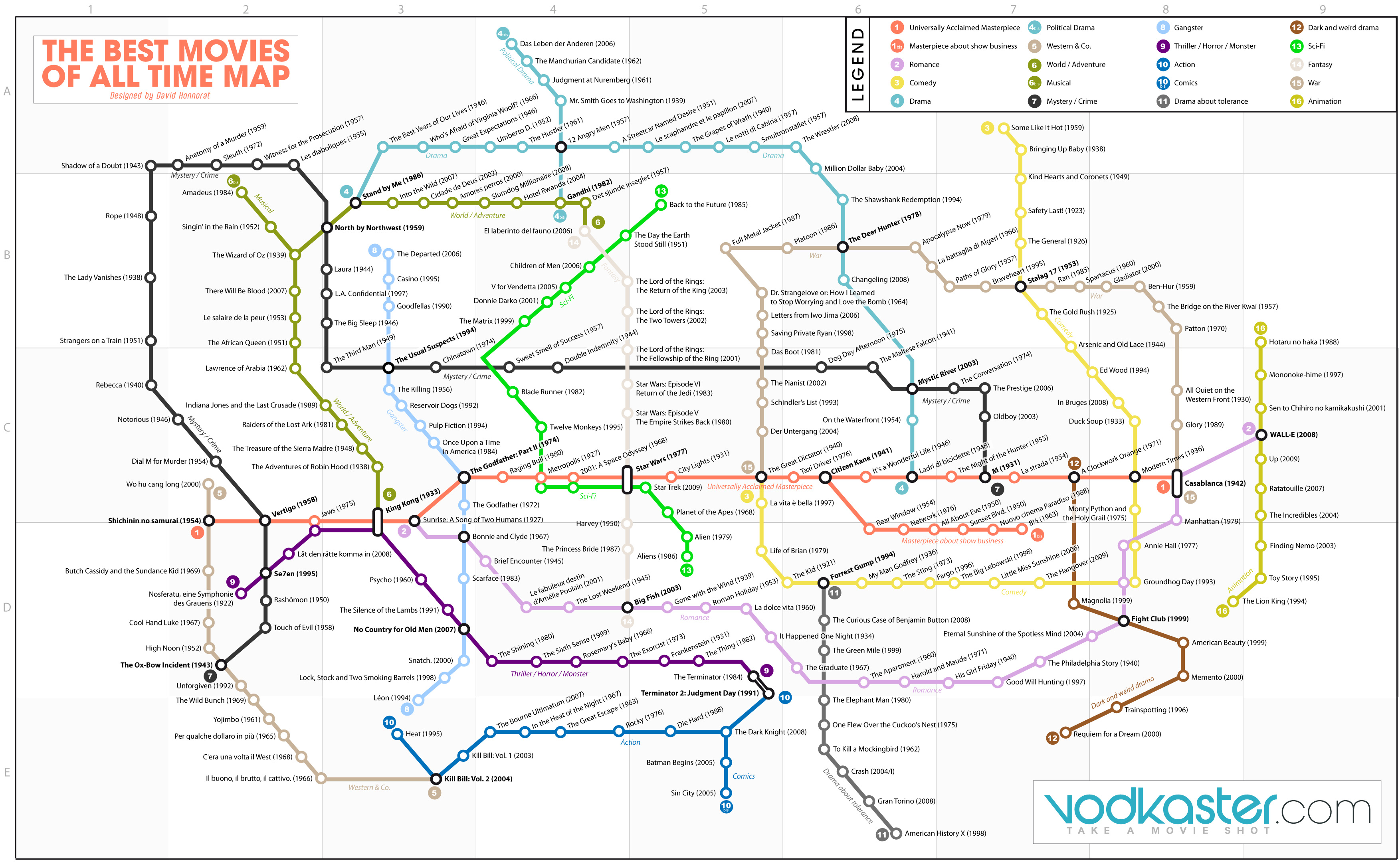Best Movies of All Time: The Chart
Posted on June 10, 2010 at 8:00 am

This chart by David Honnorat is an astonishingly elegant display of classic movies. (Click on the link in the last sentence for a larger view.)
Posted on June 10, 2010 at 8:00 am

This chart by David Honnorat is an astonishingly elegant display of classic movies. (Click on the link in the last sentence for a larger view.)
Comments are closed.
I agree that it’s an elegant display, but really? Wall-E over Toy Story or Finding Nemo? How could that be? I’d love to know how those rankings came about, because I’m amazed by more than just this one.
I agree with Barbara– I was surprised to see a number of movies on this this list (Clockwork Orange and It’s A Wonderful Life on a tier with Citizen Kane as a “universally acclaimed masterpiece”? Really??? just as I was surprised to see a number of movies missing from this list. It is an interesting 5 minute diversion as one person’s highly subjective taste, but it is nothing I would consider close to definitive.
As for classifying different movies as if they were subway stops on a mass transit map (“…now approaching gangster land, last stop on the blue line…”) I am far more impressed by what Terry Gilliam said in exasperation when the studio kept trying to pin him down on how to market his newest film: “They keep trying to define it and I keep trying to make the damn thing undefinable!”
Thanks, iorek and Barbara! Anyone’s list is going to be more arbitrary than definitive; I’m skeptical of any kind of ranking, whether it’s the AFI, the Library of Congress, Rolling Stone, or some guy with a computer. And why should a list be a dozen, a hundred, or any special number? I was intrigued by this chart as a visual display of a lot of data more than as an ultimate validation of what is and is not a classic. And that between-genres idea that Gilliam was going for is something I think it does pretty well — at least, I give him credit for reflecting the fact that some of the best movies straddle categories.
This colorful chart as a first stab in understanding someone’s idea of “what” were the important films. It represents an opinion. It would have been interesting to know, that if the choices were based on a poll, then what were the ratings and what else was considered for comparing and raking the “choices.” I don’t think this chart was optimized to show possible bias in the selection of the choices.
Artistic intent of each picture might have rearrange the chart quite differently. My comment is more to inspire a deeper look into patterns of choice that are not time/era dependent. Originality would be a great discriminator; casting, set, special effects, story line, surprise twists, and etc.
Some of the choices are meaningful in the context the were produced and released to the public. For some reason “12 angry men strikes me as being one such movie, though I have not seen it. It the title word choice that that makes me think that the story of the motion picture may have bearing on it’s days prejudices and bias in culture, that may not exist now, maybe in part because of the movie may have raised awareness in the viewer of that day so that future culture change might be possible.
I hope this makes sense. Thanks you for taking the time to read and consider it.
A great comment, Gene, thanks. And I hope you see “12 Angry Men” sometime (there are two versions, both excellent). I’d like to see your list of the best films!